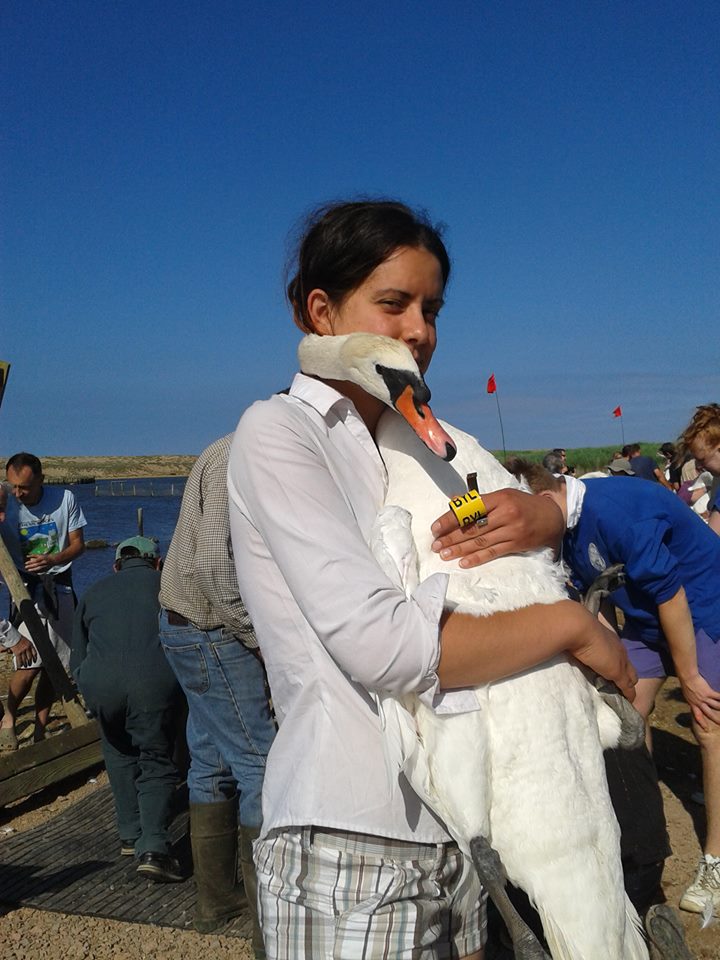Dr Antica Culina
Alumni
I joined WildCRU as a Postdoc in 2015, after completing my DPhil at the Edward Grey Institute of Ornithology, University of Oxford. At WildCRU I work on demography and social networks in bats (Wytham Bat Project). My research career has followed two main research areas that are at the centre of my interests in biology: animal and human ecology and behaviour, and their application in nature conservation.
1) Urbanisation and wildlife: I did my Master’s dissertation on the bird populations in urban parks, where I assessed the composition and diversity of bird communities in the parks and evaluated the relationship between avifaunal and park characteristics. I used the results of my study to address the importance of urban parks in the conservation and promotion of bird populations in urban areas, together with guidelines for park management.
2) Population ecology, education and nature conservation: during my studies, and after graduation, I worked on a number of bird and (to a lesser extent) small mammal population monitoring projects in Croatia. Most of the research was in co-operation with two Croatian biological associations (BIOM and BIUS) and the Croatian Institute of Ornithology.
3) Divorce in monogamous species: In my DPhil project I worked on the issue of mate fidelity and divorce in monogamous species. Although predominantly socially monogamous (~85% of species), birds are far from being genetically monogamous – extra-pair mating has been recorded in 75%, and divorce in 90%, of socially monogamous species. In a meta-analysis of 64 monogamous bird species I showed that divorce is an adaptive strategy as it is triggered by generally low breeding success, and as it leads to increase in breeding success between the two seasons (Culina et al. 2014). I have also developed a method to estimate accurate and unbiased rates of pair fidelity, which can be used to test hypotheses on costs, benefits and external correlates of pair fidelity. Using this method I showed that partner change is costly (reduces survival) in populations of great tits (Culina et al. 2013), blue tits (Culina et al. 2015), and mute swans (Culina et al. in prep). Finally, I have applied the social network analysis to find that males, but not females, with higher numbers of female associates in winter, and males whose future breeding partners were ranked low amongst these, divorced more often (Culina et al., in revision).
I am also interested in human pair bonds, and the functional and evolutionary significance of stable pair bonding in humans.
Please see my personal web-site for more details on my research as well as my music work: https://anticaculina.wordpress.com
Selected Publications
Culina A., Hinde C.A & Sheldon B.C (in revision): Carry-over effects of the social environment on future divorce probability in a wild bird population. Proceedings of the Royal Society B
Culina A., Lachish S., & Sheldon B.C (2015): Evidence of a link between survival and pair fidelity across multiple tit populations. Journal of avian biology. DOI: 10.1111/jav.00661
Culina A., Radersma R., Sheldon B.C. (2014). Trading up: the fitness consequences of divorce in monogamous birds. Biological Reviews: DOI: 10.1111/brv.12143
Culina A., Lachish S., Pradel R., Choquet R. & Sheldon B.C (2013): A multievent approach to estimating pair fidelity and heterogeneity in state transitions. Ecology and Evolution 3, 4326-4338.
Psorakis I., Voelkl B., Garroway C., Radersma R., Aplin L., Crates R., Culina A., Farrine D., Firths J., Hinde C., Kidd L., Milligan N., Roberts S., Verhelst B. & Sheldon B. (2015): Inferring social structure from temporal data. Behav. Ecol. Sociobiol. doi: 10.1007/s00265-015-1906-0
Farine D.R., Firth J.A., Aplin L., Crates R.A, Culina A., Garroway C., Hinde C.A., Kidd L.R., Milligan N.D., Radersma R., Verhelst B., Voelkl B., Sheldon B.C.: The role of social and ecological processes in structuring animal populations: a case study from automated tracking of wild birds. Royal Sciety Open Science (in press)
Mikulic K., Budinski I., Culina A., Jurinovic L. & Lucic V. (2013): The return of the Lesser KestrelFalco naumanni as a breeding bird to Croatia. Acrocephalus 34, 71-74.
Budinski I., Culina A., Mikulić K. & Jurinović L. (2010). Bird species that have significantly changed breeding range on Croatian coastal area: comparison of 30 years old data and recent knowledge. Bird Census News 23: 49-58.







